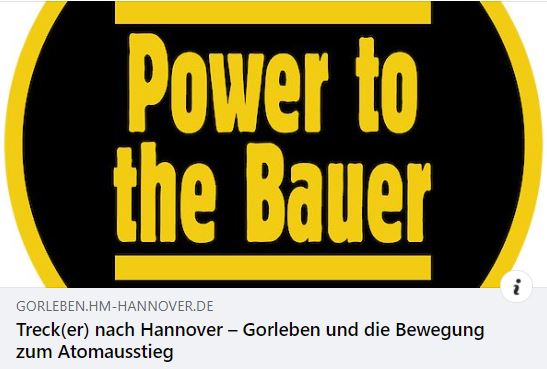
BI Lüchow-Dannenberg e.V.
In Zusammenarbeit mit dem Gorleben Archiv e.V. hat im vergangenen Jahr im Historischen Museum Hannover eine Ausstellung zu 40 Jahre Treck nach Hannover stattgefunden. Nun wurde diese Ausstellung um eine digitale Webseite ergänzt, die beeindruckt:
https://gorleben.hm-hannover.de/
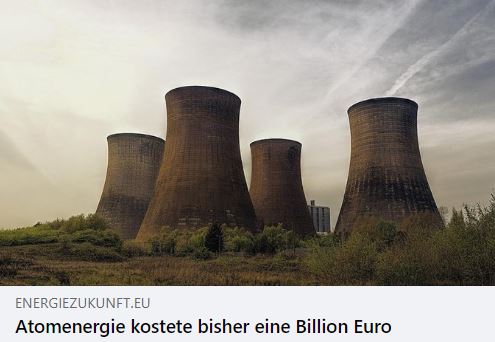
Seit dem Einstieg Deutschlands in die Nutzung der Atomkraft am 20. Oktober 1955 sind hierzulande mehr als 100 Atomanlagen in Betrieb gegangen. Neben kommerziell genutzten Atomkraftwerken und Forschungsreaktoren mussten auch zahlreiche Lagerstätten für den radioaktiven Müll errichtet werden. Das alles hat in den letzten 65 Jahren gesamtgesellschaftliche Kosten von mehr als eine Billion Euro verursacht, wie aus einer aktuellen Studie des Forum Ökologisch-Soziale Marktwirtschaft (FÖS) hervorgeht.
In diesen Kosten sind sowohl staatliche Förderungen als auch Verkaufspreise enthalten. Die von der Atomlobby gerne unterschätzten externen Kosten haben die FÖS-Experten ebenfalls hinzugerechnet. In Auftrag gegeben wurde die Studie von der Ökoenergiegenossenschaft Greenpeace Energy. Read More »

Erstes, zweites und drittes Gebot: Der Stromverbrauch darf nicht weiter zunehmen.
Denn soviel steht fest: Zwischen 2020 und 2035 gehen die alten Schweizer Atomkraftwerke schrittweise vom Netz, und die AKW-Beteiligungen von Schweizer Stromfirmen in Frankreich laufen aus. Doch das Modell einer möglichst autarken Stromversorgung ohne Atomkraftwerke stösst auf Widerstand: Gewässer- und Landschaftsschutz setzen Wind- und zusätzlichen Wasserkraftwerken in der kleinräumigen Schweiz enge Grenzen. Die Abkehr von der Atomkraft bleibt ein steiniger Weg.
https://www.infosperber.ch/Dossier/Atomenergie-nach-Fukushim
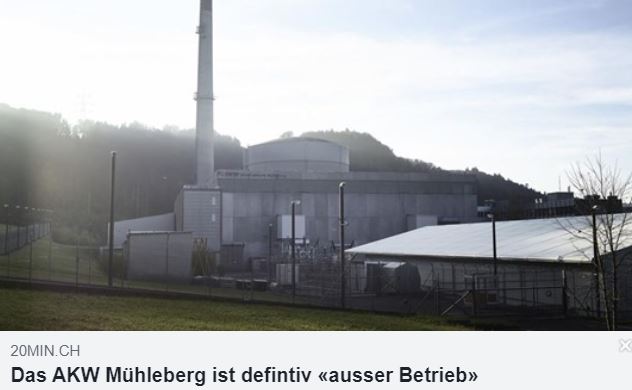
Rund neun Monate nach der Abschaltung ist das Atomkraftwerk Mühleberg definitiv «ausser Betrieb». Die Betriebsbewilligung ist erloschen.
Das Atomkraftwerk habe alle Voraussetzungen für die endgültige Ausserbetriebnahme sowie für den Übergang in die erste Stilllegungsphase erfüllt, teilte der Energiekonzern BKW am Mittwoch mit. Zuvor prüfte das Eidgenössische Nuklearsicherheitsinspektorat ENSI die eingereichten Unterlagen und führte eine Inspektion im Werk Mühleberg durch.
In den letzten Monaten wurden im Reaktorgebäude Massnahmen zur Einrichtung einer unabhängigen Kühlung des Brennelementebeckens sowie weitere Arbeiten vorangetrieben.
https://www.20min.ch/story/das-akw-muehleberg-ist-defintiv-ausser-betrieb-670257679932
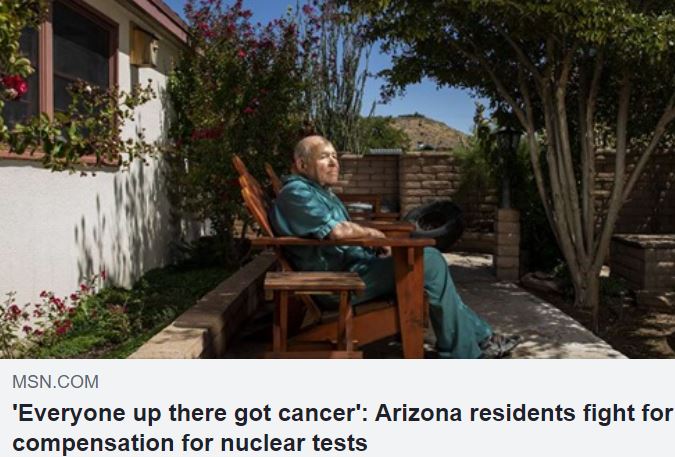
“$50,000 is not even enough to cover one of my appointments." The effects of nuclear testing are so grave that people are still suffering from terrible diseases, and losing lives, and family members to this day. Not only do the victims pay physically for someone else’s choice to detonate dangerous, radioactive weapons, but also financially when compensation is hard to come by. It is high time the victims of nuclear tests are acknowledged and the money spent on promoting #nuclearweapons can instead be spent on ensuring the survivors’ well-being and healthcare.
https://www.msn.com/en-us/news/us/everyone-up-there-got-cancer-arizona-residents-fight-for-compensation-for-nuclear-tests/ar-BB18Z06v
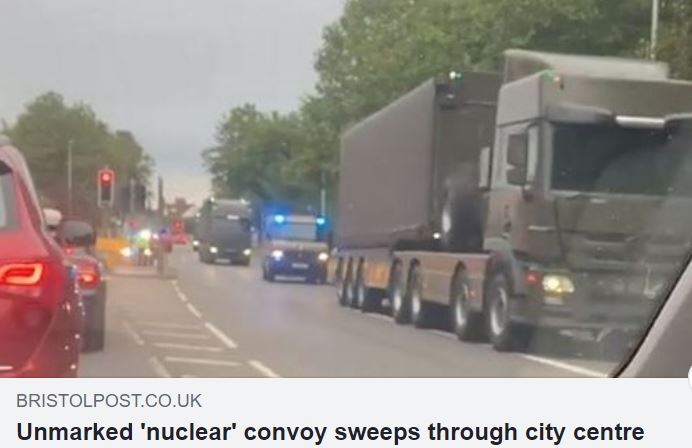
This is the moment an unmarked military and police convoy stopped the traffic and stunned drivers and commuters as it swept through the city centre of Bristol this week.
The 14-vehicle convoy was captured on camera as it held up traffic on a main road into Bristol, and then headed out of the city on the M32.
The moment it came down the A37 Wells Road in Totterdown and joined the A4 Bath Road in a wail of sirens was captured by one surprised driver as she was waiting in her stationary car on the other side of the road.
The convoy began with a military police 4x4 car and then went on to include two police cars, three large police vans, another police 4x4, three large army people carriers and what appeared to be the subject of the guard of the convoy - four large LGV lorries with large unmarked containers on the trailers. Read More »
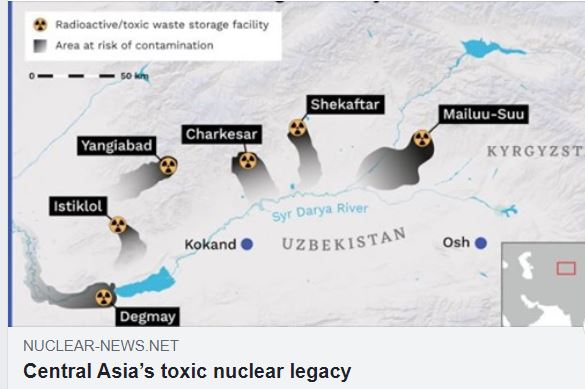
According to Kyrgyz official data, the gamma radiation on tailings pit surfaces are within 17-60 mR/hr; however, in the damaged areas, radiation levels reach 400-500 mR/hr. An exposure to 100 mSv a year (a millisievert, mSv, is equal to 100 milliroentgens, mR) or 10,000 mR is the point where an increase in cancer is clearly evident. At 400-500 mR/hr this would be achieved in 20-25 hours, or just one day. Radionuclides and heavy metals from these tailing pits and dumps are seeping into the surface and groundwater, polluting water and farmland and increasing the risk of cancer for local people.
Birth anomalies are an additional indicator of environmental radioactive contamination. A study by the Institute of Medical Problems showed that the incidence of birth defects in Mailuu-Suu was three times higher than in the country’s second largest city of Osh. Studies have correlated birth defects to the distance of the parents’ residences from radioactive waste sites. Polluted water is the major factor causing the development of congenital malformations, according to research by the Institute of Medical Problems. Read More »
Hello, welcome to 66.xx FM radio. What would you like to discuss today?
Fukushima.
Click.....
Everytime.